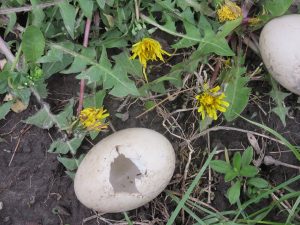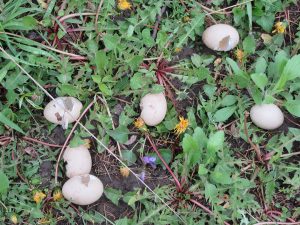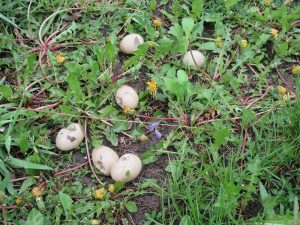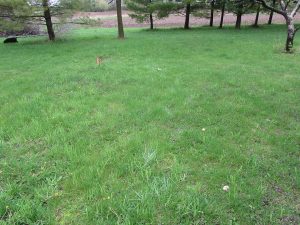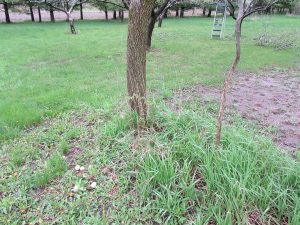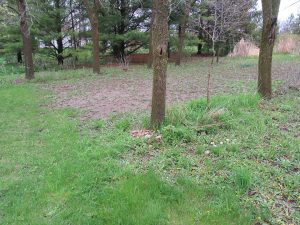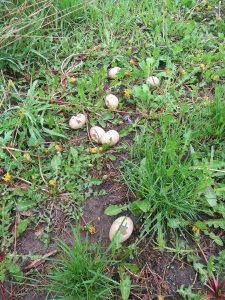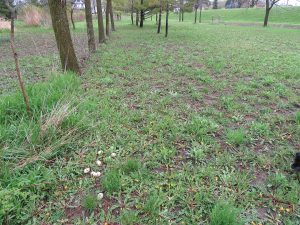Need you experts on waterfowl and egg-sucking predators to weigh in here…
I have several questions, a couple of identification guesses, and a real scene-of-the-crime mystery.
There are 12 hole-punched-and-sucked-dry eggs on our lawn, a long way from any suitable nesting site. We (my wife and I) think they are mallard duck eggs. They look a bit speckled in close-up photos, but they’re not. The eggs are a deep cream to soft tan and smooth shelled. Shaped more like a chicken egg than anything else, and about the smaller size egg a young hen starting her career would lay. Too small to be turkey eggs, and the shell surface isn’t right, nor the overall shape.
The hole punched in each egg is larger than a dime, but not by much. No eggs were crushed.
What did that? A couple of guys I talked with suggested skunk. Your thoughts?
Now we get to the weird part, the scene of the crime:
- There is no sign of a ground nest of any type anywhere near the eggs. Were the eggs brought there one by one by the predator? Seems like that’s what happened.
- Judy and I had sporadically pruned our apple ‘orchard’ (four trees, a great plenty) for about a week. We were within 10 feet of the scene of the crime a good bit of the pruning time. We may not have great vision, but we aren’t blind. There were no eggs at that location next to the ash tree until three days ago. Then all of them appeared, meaning that it was an overnight job.
- Of the 12 eggs, eight were clustered on the south side of the ash tree; two were on the north side of the tree, and two were in our lawn about 20 feet west of the group of eggs.
- I stood in one spot and took photos looking in various directions to show how unlikely it is that any sane duck would have nested anywhere near there. That is lawn or former garden, along with a couple of pine tree strips.
- The creek-ditch (more ditch than creek) area nearest the egg group has no suitable nesting cover…not even any almost-suitable nesting cover, unless bare, sloping mud banks can be considered a possible nest site. Suitable ditch-bank cover or other cover is at least 20 yards away.
- Why would a predator drag those eggs to where it did, and drag nearly all of them to the same drop-off location? Maybe the EPA was watching, OSHA too, and the culprit didn’t want to be cited for littering or unsafe work practices. Or maybe climate change has affected local mallards’ locational/directional senses for nesting. Maybe there were two culprits having races from nest to disposal sites. One wonders and hypothesizes…
Appreciate your input.


